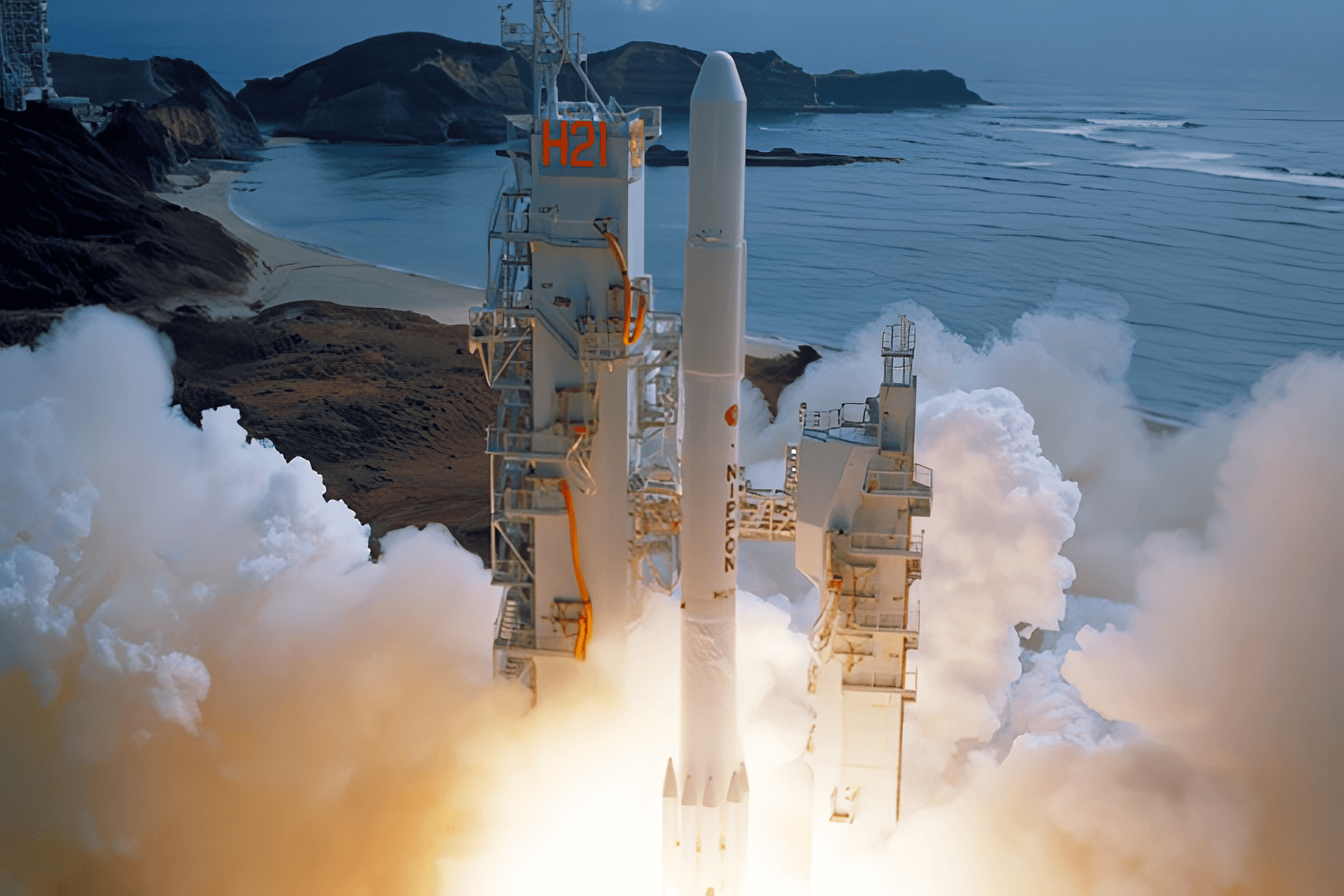
H-1
In-activeMitsubishi Heavy Industries (MHI)
Aug. 12, 1986
Description
The H-1 was a Japanese liquid-fuelled carrier rocket, consisting of a license-produced American First Stage and set of booster rockets and all-Japanese upper stages. It replaced the N-II and was subsequently replaced by the H-2 which has the same upper stages with a Japaense first stage.
Specifications
-
Minimum Stage
2 -
Max Stage
3 -
Length
42.0 m -
Diameter
2.44 m -
Fairing Diameter
2.44 m -
Launch Mass
142.0 T -
Thrust
―
Family
-
Name
H-1 -
Family
― -
Variant
I -
Alias
― -
Full Name
H-I
Payload Capacity
-
Launch Cost
― -
Low Earth Orbit
3200.0 kg -
Geostationary Transfer
Orbit
1100.0 kg -
Direct Geostationary
― -
Sun-Synchronous Capacity
―
Mitsubishi Heavy Industries
Commercial
President: Seiji Izumisawa
MHI 1884Mitsubishi Heavy Industries, Ltd. is a Japanese multinational engineering, electrical equipment and electronics company headquartered in Tokyo, Japan. MHI is one of the core companies of the Mitsubishi Group. MHI's products include aerospace components, air conditioners, aircraft, automotive components, forklift trucks, hydraulic equipment, machine tools, missiles, power generation equipment, printing machines, ships and space launch vehicles. Through its defense-related activities, it is the world's 23rd-largest defense contractor measured by 2011 defense revenues and the largest based in Japan.
H-1 | Fuyo 1
Mitsubishi Heavy Industries | JapanTanegashima Space Center, Japan
Feb. 11, 1992, 1:50 a.m.
Status: Launch Successful
Mission:
JERS 1 (Japanese Earth Resources Satellite) is an Earth Observation Satellite to cover the global land area for national land survey, agriculture, forestry, and fishery, environmental protection, disaster protection, and coastal monitoring, etc. focusing on observation around the world and resource exploitation.
Sun-Synchronous OrbitH-1 | Yuri 3B
Mitsubishi Heavy Industries | JapanTanegashima Space Center, Japan
Aug. 25, 1991, 8:40 a.m.
H-1 | Yuri 3A
Mitsubishi Heavy Industries | JapanTanegashima Space Center, Japan
Aug. 28, 1990, 9:05 a.m.
H-1 | Momo 1b
Mitsubishi Heavy Industries | JapanTanegashima Space Center, Japan
Feb. 7, 1990, 1:33 a.m.
H-1 | Himawari 4
Mitsubishi Heavy Industries | JapanTanegashima Space Center, Japan
Sept. 5, 1989, 7:11 p.m.
H-1 | Sakura 3B
Mitsubishi Heavy Industries | JapanTanegashima Space Center, Japan
Sept. 16, 1988, 9:59 a.m.
H-1 | Sakura 3A
Mitsubishi Heavy Industries | JapanTanegashima Space Center, Japan
Feb. 19, 1988, 10:05 a.m.
H-1 | Kiku 5
Mitsubishi Heavy Industries | JapanTanegashima Space Center, Japan
Aug. 27, 1987, 9:20 a.m.
Falcon 9
CSG-3
Space Launch Complex 4E - Vandenberg SFB, CA, USACSG-3 is an Earth observation satellite for the Italian Space Agency, part of a reconnaissance constellation using synthetic aperture radars operatin…
Long March 7A
Shijian 29 A-B
201 - Wenchang Space Launch Site, People's Republic of China2 satellites officially described as for "demonstration of new technologies for spatial targets detection" purposes.
Long March 4B
Tianhui 7
Launch Area 94 (SLS-2 / 603) - Jiuquan Satellite Launch Center, People's Republic of ChinaA satellite officially described as for cartography purposes, details TBD.
Soyuz 2.1b/Fregat-M
AIST-2T 01 & 02
Cosmodrome Site 1S - Vostochny Cosmodrome, Siberia, Russian FederationA pair of Russian optical Earth observation satellites built by the Progress Rocket Space Centre for obtaining stereo images of the Earth's surface, …
Long March 3B/E
Fengyun-4C
Launch Complex 2 (LC-2) - Xichang Satellite Launch Center, People's Republic of ChinaChina's geostationary meteorological satellite program FY-4 (Feng Yun 4) is the second generation of chinese geostationary meteorological satellites.

